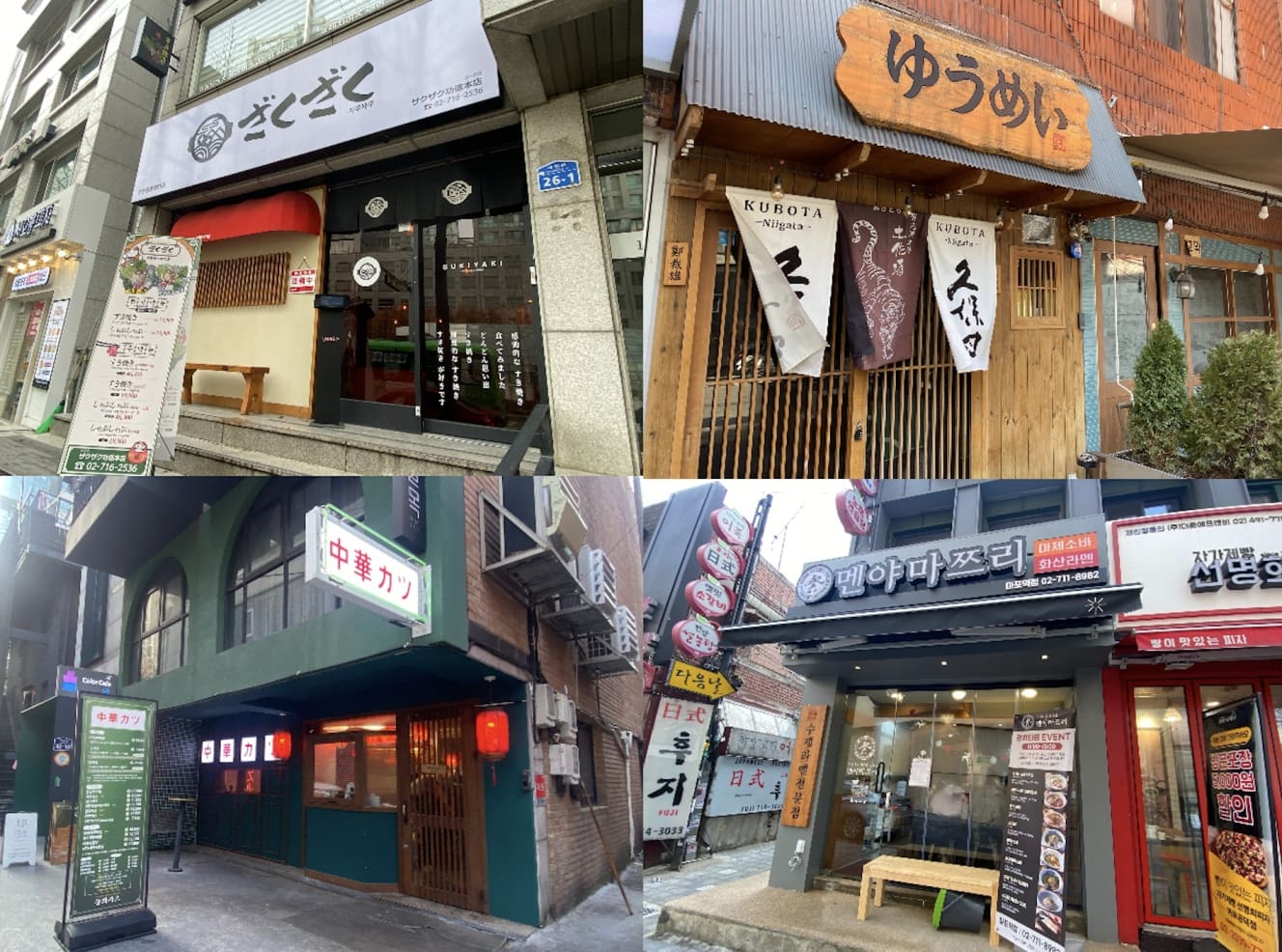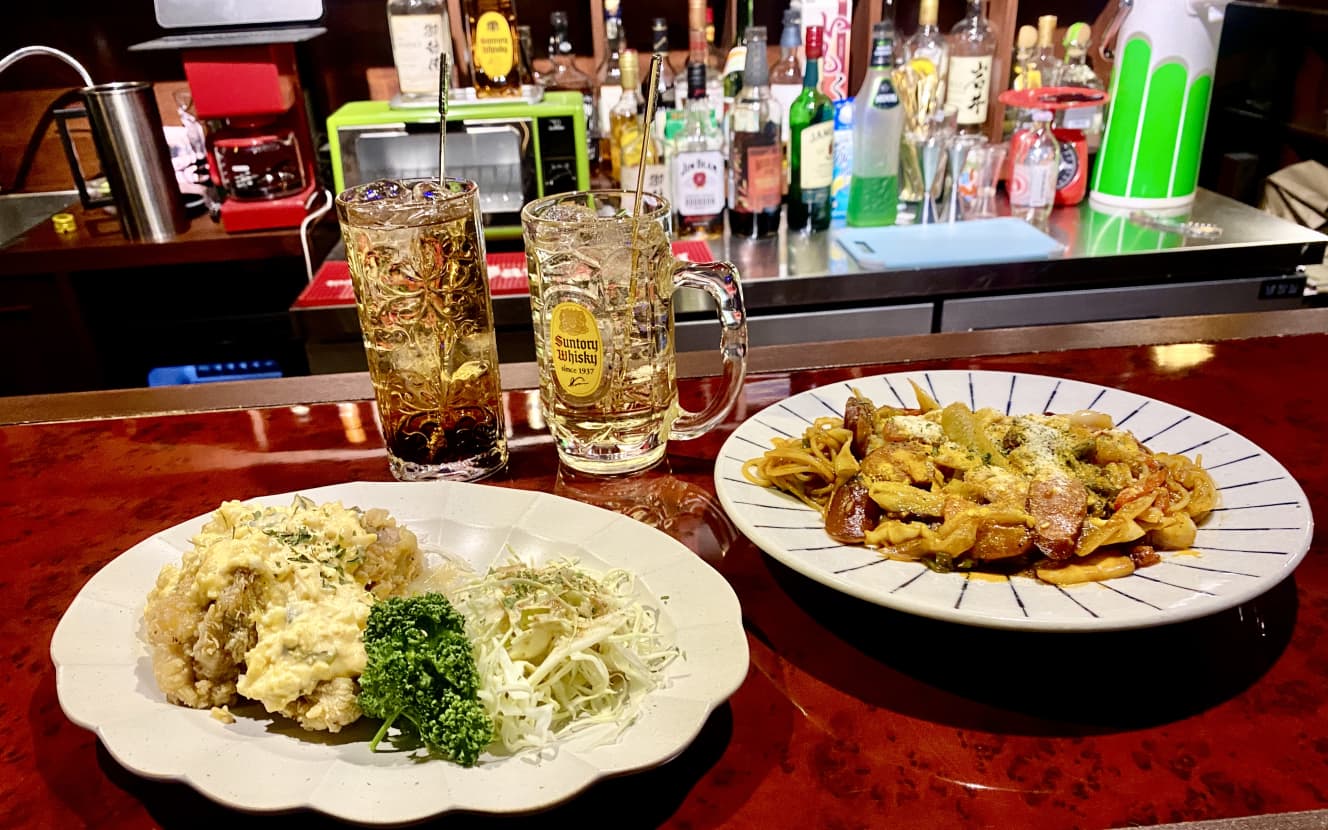Tonkatsu, highballs, izakayas… A popular area in Seoul, Korea, is now full of “Japanese restaurants
Japanese “omakase” searches nearly doubled and over 530,000 related posts on Instagram!
South Korea is a popular destination for Wiz Corona’s Revenge trip. The number of Japanese restaurants in that popular city, Seoul, is increasing more and more.
There have been several Japanese food booms in Korea in the past, but now Japanese food seems to have become more of a fixture than a boom. In addition to the familiar international menu items such as tonkatsu, sushi, and ramen, there is now a wide variety of dishes such as sukiyaki, shabu-shabu, Japanese-style set menus, coffee shop menus, and so on.
In line with this boom, the Japanese language has also taken root in the culinary field. One such example is the Japanese word “omakase. Omakase” menus, previously seen only in high-end Japanese restaurants, are now being used not only for sushi, but also for yakiniku (barbeque), desserts, and other dishes. A Neighbor-related research firm reports that in the two years from August 2020 to September 2022, the number of searches for “omakase” doubled and there were more than 530,000 related posts on Instagram.
Other Japanese words such as “salt bread,” “futomaki,” and “highball” can be found all over town. In addition, Japanese instant yakisoba noodles made in Korea and tonkotsu (pork bone) stick ramen noodles made in Japan are easily available at large department stores.

While the COVID-19 crisis prevents people from freely traveling to and from Japan, the number of Japanese restaurants has increased, especially in popular areas for young people such as Seongsu-dong and Yeonnam-dong, as if in response to the desire of people who like Japanese food and want to obtain satisfaction by proxy.
The popularity of Japanese gourmet content, which began with the movie “Kamome Shokudo” (2006) and has continued with “Solitary Gourmet” (2012-) and “Midnight Diner” (2014), has been a major factor supporting the popularity of Japanese restaurants, but it is mainly the younger generation that is driving the boom. They are pursuing not “Japanese style” but “Japanese taste itself” and are opening new restaurants one after another.
Japanese restaurants are popping up one after another in “Sungsu-dong” and “Yeonnam-dong,” hot areas popular among young people.
One of them is “Sungsu-dong,” which is located near Gangnam, a downtown area in the eastern part of Seoul, and is one of the hottest areas in Seoul. It used to be known as a town of factories, mainly shoe factories, but since about 2014, stylish cafes and stores renovated from abandoned factories and warehouses have been gathering here, and it has come to be called the Brooklyn of Seoul.
The narrow alleys are crowded with people on weekdays and weekends, but the streets are lined with stores offering mixed ramen, tonkatsu, rice bowls, and izakaya (Japanese-style pubs), making one feel as if they have come to Japan.

One of the most popular restaurants is ” Hoho Shokudo,” a Japanese-style home-style restaurant. The restaurant features a wide variety of Japanese dishes such as tonkatsu (pork cutlet), salmon, seafood rice bowl, unaju (rice topped with eel and rice), omelette, and cod roe pasta, and the renovated house in Seongsu is also known for its modern interior. The Seongsu branch, located in a renovated house, is well known for its sophisticated interior and modern space. It is becoming commonplace among young people in Seoul to enjoy dates at these stylish Japanese restaurants.


Click here to see the Instagram of 【Favorite Eatery 】.
Along with Sungsu-dong, another popular area is Yeonnam-dong, which stretches to the north of Hongdae, a town for young people. This was a quiet residential area not long ago, but is now becoming one of Seoul’s most popular tourist spots. When the abandoned Gyeongui railway line, which used to run through this town, was developed into a green-filled park, it is also known as “Yeontral Park” because of its resemblance to New York’s Central Park.
There are three main reasons for the increase in the number of hideaway Japanese restaurants in relatively small spaces in these residential areas. The first is the establishment of Japanese food as mentioned above. The second is the increase in the number of people living alone. As the “one-person culture” has taken root in Korea, Japanese restaurants that can be enjoyed by one person have met this need. The third reason is that small Japanese restaurants can be run by one person. In a sense, this could be said to reflect the social situation in Korea.
The “highball” has taken root in Korea. But the taste…
Thanks to the whiskey boom, especially among the younger generation, and the big breakthrough of the Earl Grey Highball introduced on TV by TV personality Park Nare, the highball has become a familiar drink in Korea over the past few years, and it is now available in restaurants other than Japanese restaurants.
The Jungju Highball Club, a hot spot in Yeonnam-dong, specializes in highballs. The restaurant is produced by Mr. Jae-woo Song, who was an early adopter of Yeonnam-dong and opened the successful ” Newsboy,” an authentic hamburger store with an image of the good old days in the United States. At this restaurant, which aims to create the atmosphere of a Japanese restaurant, customers are first asked whether they prefer a “sweet” or “not sweet” highball. In Japan, a highball is made with unsweetened sparkling water, but in Korea, most highballs are made with sweet tonic water sold by Jinro. Sales of tonic water in 2022 were up 83 percent over the previous year, which explains the size of the boom.



Click here for the Instagram of Nakasu Highball Club
Eulchiro, a town where the old and the new coexist and Japanese city pop music flows
The main street of Euljiro near Myeongdong is lined with office buildings, creating a very urban landscape, but around the 3rd and 4th streets of Euljiro, the area is dominated by printing companies, lighting fixture wholesalers, and factories.
Although old buildings are disappearing one after another in the wave of redevelopment, galleries, cafes, bars, and clubs are opening one after another in this area, where the atmosphere of the 1960s and 1970s remains strong. The area became the spark for the “Neutron Boom” that combined the new with the old, and came to be known as “Hip Chiro (Hip + Ulchiro).

It has been a long time since the revival of city pop born in Japan became popular worldwide, but in Korea, it is the millennial generation (born between the 1980s and 1990s) that is pulling the neutro boom and enjoying the culture of the 1980s and 1990s in Japan by listening to city pop. They familiarize themselves with city pop and Japanese songs at restaurants such as[Shintoshi] and[Baataiger Disco] in Otsujiro, and order fruit sandwiches and cream sodas at retro-style cafes that look like they could be found in a Japanese coffee shop.
Cafe [Bunka Sha], which opened in 2017, is representative of such cafes. Located on the second floor of an old multi-tenant building, it is famous for being hard to find. Currently, it is a popular store with six locations in Seoul, as well as in department stores. City pop music is constantly playing in the store.


Seoul’s Japanese-style ramen continues to evolve
We have repeatedly reported that not Japanese style but Japanese taste itself has become the trend of Japanese restaurants in Seoul, and the last one we will introduce is Japanese-style ramen, which has been listed in the Michelin Bib Gourmand.
Korea also has its own “Michelin Guide Seoul,” and the 2021 edition selected Oleno Ramen, whose main restaurant is located in Hapcheong, next door to Hongdae. The restaurant has six outlets in Seoul, and its signature dish is paitan ramen.
In the Myeongdong area, which is well-known to Japanese tourists, Mendon ‘s soy sauce ramen and tantanmen were featured in the 2022 edition and became a hot topic. The owner, Kim Sung-yun, is a one-man operation, and his ramen is remarkable in its perfection, but he is modest, saying, “There are many restaurants in Seoul that serve better ramen than ours.


Click here for Rumiko Ose’s YouTube channel “Riumei in Korea
Interview and text: Rumiko Ose
Writer. Born in Yokohama, Kanagawa Prefecture. She is the author of "Seoul, Adult Social Tour (Aki Shobo)" and "Gyeongseong Apartments (Chitto Books Publishing)," an essayist of "Chukonaka no Tomodachi: Han Kun Techo (Han Kun Handbook)" (Koseisha), and a series of reports on the Japanese publishing scene in magazines in Korea. His translations into Korean include "Let's Eat Around the World! She is currently posting updates on Seoul on her YouTube channel, "Riumei in Korea.
Photo by: Lee Seungyeon